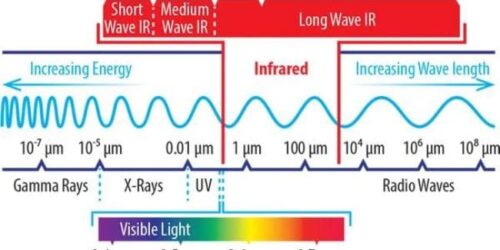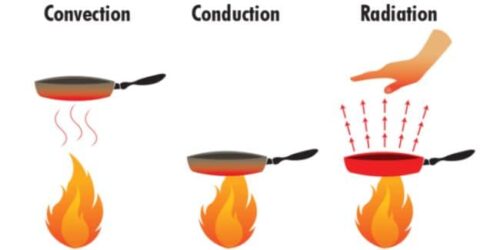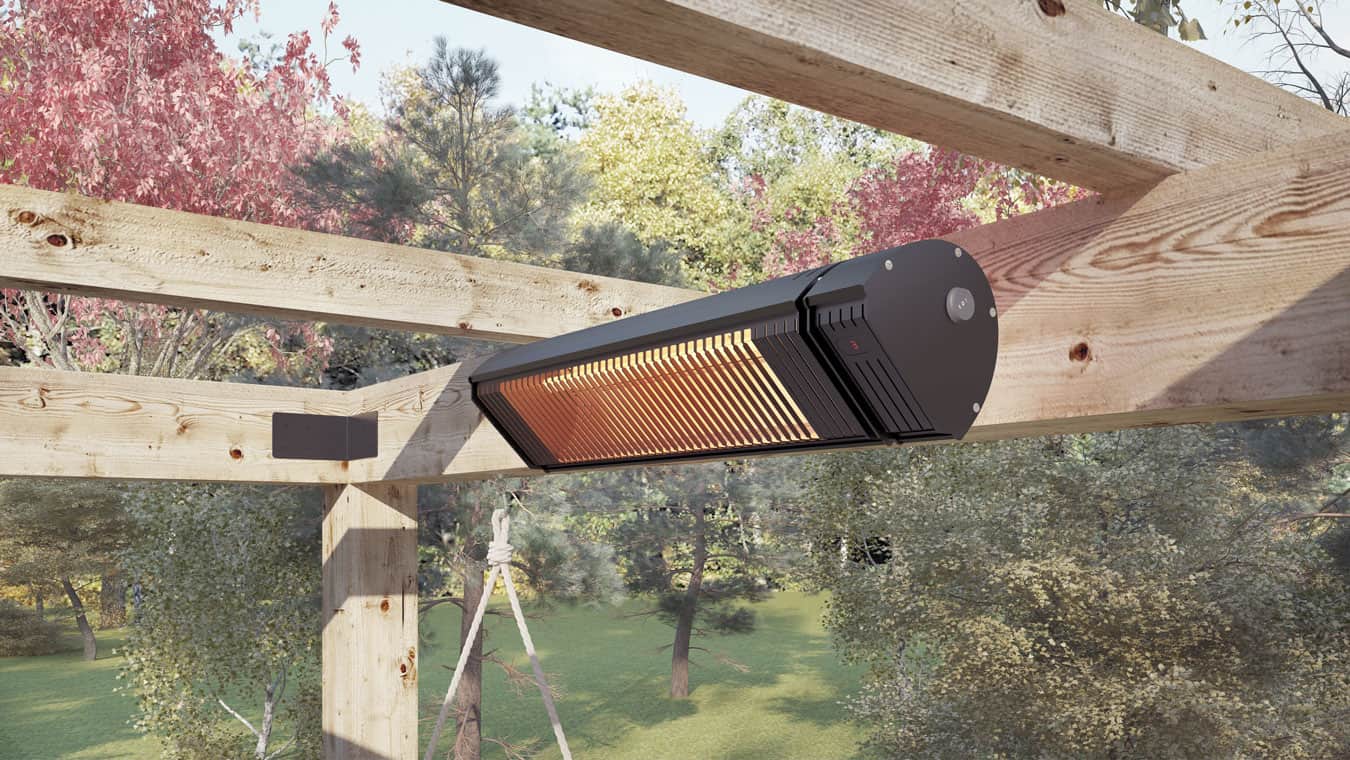Understanding Infrared Heat
As the demand for efficient and eco-friendly heating solutions grows, infrared heaters are becoming increasingly popular, particularly for residential outdoor spaces. Understanding the science behind infrared heat, its benefits, and how it works can help homeowners make informed decisions about their heating needs. This article delves into the core aspects of infrared heat, aiming to provide a detailed, technical overview that highlights its advantages and practical applications.
What is Infrared Heat?

Infrared heat is a form of radiant energy, similar to the warmth felt from the sun. Unlike traditional convection heaters, which warm the air, infrared heaters directly warm objects and people in their path. This type of heat is part of the electromagnetic spectrum and falls just below visible light, making it invisible to the naked eye.
Infrared heat operates at different wavelengths, categorized as near, medium, and far-infrared. Each type has specific applications and benefits:
- Near-infrared (0.75 to 1.4 microns): Often used in medical treatments and industrial processes.
- Medium-infrared (1.4 to 3 microns): Suitable for heating applications, such as saunas and space heaters.
- Far-infrared (3 to 1000 microns): Commonly used in residential and outdoor heaters.
The Electromagnetic Spectrum
The electromagnetic spectrum encompasses all types of electromagnetic radiation, which vary in wavelength and frequency. Infrared radiation falls between visible light and microwave radiation on this spectrum. The primary source of infrared radiation is the sun, which emits a broad range of electromagnetic waves, including infrared.

Heat Transfer Methods

There are three main methods of heat transfer: conduction, convection, and radiation.
Infrared heaters use radiation to transfer heat. Unlike convection, which relies on air circulation, radiation transfers heat directly to objects and surfaces without significantly warming the surrounding air. This method is more efficient in outdoor settings where wind and air movement can dissipate heat quickly.
How Does Infrared Heat Work?
Infrared heaters function by emitting infrared radiation, which is absorbed by objects and surfaces, converting it into heat. This process is efficient because it reduces the energy lost in heating the air. The key components of an infrared heater include:
- Emitter: Often made of quartz, ceramic, or metal, the emitter produces infrared radiation when heated.
- Reflector: Directs the infrared radiation towards the desired area, maximizing the heater’s efficiency.
- Housing: Encases the emitter and reflector, ensuring safety and durability.
The efficiency of infrared heaters is largely due to their ability to convert nearly all the electrical energy they consume into heat. This is in contrast to traditional heaters, which lose a significant portion of energy through convection.
Infrared Heater Efficiency Comparison
| Heater Type | Efficiency (%) | Heating Method |
| Infrared Heaters | 90-95 | Radiant |
| Convection Heaters | 70-80 | Air |
| Radiant Heaters | 85-90 | Direct Surface Heating |
Benefits of Infrared Heaters for Residential Outdoor Use
- Energy Efficiency:
- Infrared heaters are known for their high energy efficiency, as they convert most of the consumed electricity directly into heat.
- According to the U.S. Department of Energy, infrared heaters can reduce heating costs by up to 50% compared to traditional heating methods.
- Quick and Direct Heating:
- Unlike convection heaters, infrared heaters provide immediate warmth by directly heating objects and people, making them ideal for outdoor use where air movement can reduce the effectiveness of other heating methods.
- Health and Safety:
- Infrared heat is gentle and safe.
- These heaters do not produce harmful emissions, making them environmentally friendly.
- Versatility and Aesthetics:
- Modern infrared heaters are designed to blend seamlessly into outdoor settings, with various styles and mounting options available.
- They can be used in patios, gardens, and other outdoor living spaces, providing comfort without compromising on design.
Detailed Technical Specifications
Understanding the technical aspects of infrared heaters can help consumers choose the right model for their needs. Key specifications include:
- Power Output: Measured in watts, typically ranging from 500W to 5000W for residential outdoor heaters.
- Heating Area: Indicates the coverage area, which can range from 100 to 1000 square feet.
- Voltage: Residential heaters usually operate on 120V or 240V.

Example Specification Table for Aura Heaters Models
| Model | Power Output (W) | Heating Area (sq. ft.) | Voltage (V) |
| Aura Outdoor 1500 | 1500 | 200 | 120 |
| Aura Outdoor 3000 | 3000 | 400 | 240 |
| Aura Outdoor 5000 | 5000 | 800 | 240 |
For more detailed information on the specifications and features, you can explore Aura Heaters’ specific series such as the Carbon Fiber Series, the Shadow Series, and the Decor Series.
Choosing the Right Infrared Heater for Your Outdoor Space
When selecting an infrared heater for residential outdoor use, consider the following factors:
- Size of the Area:
- Larger areas require heaters with higher power output and greater coverage.
- Multiple heaters may be necessary for uniformly heating extensive outdoor spaces.
- Mounting Options:
- Wall-mounted, ceiling-mounted, and freestanding models are available, offering flexibility in installation.
- Ensure the chosen model fits the aesthetic and functional requirements of the space.
- Weather Resistance:
- Outdoor heaters should have a high IP (Ingress Protection) rating, indicating their resistance to dust and water.
- Look for models specifically designed for outdoor use to ensure longevity and performance.
- Control Features:
- Advanced models come with remote controls, timers, and smart home integration, enhancing convenience and usability.
- Adjustable heat settings allow for customized comfort levels.

Aura Heaters manufactures infrared heaters with an IP65 rating, ensuring they are both dust-tight and protected against water jets from any direction. This high level of protection makes these heaters exceptionally durable and suitable for various outdoor applications, providing reliable and efficient heating even in challenging weather conditions. The IP65 rating ensures that the heaters can be safely installed in patios, gardens, and other outdoor areas, offering peace of mind and consistent performance regardless of environmental exposure. Learn more
Case Study: Infrared Heaters in Residential Patios
To illustrate the practical application of infrared heaters, consider a case study of a family who installed Aura Outdoor heaters in their patio. The patio, measuring 500 square feet, required two 3000W heaters to maintain a comfortable temperature throughout the year. The installation included wall-mounted units with remote controls for easy operation.
Maintenance and Longevity of Infrared Heaters
Proper maintenance ensures the longevity and optimal performance of infrared heaters. Key maintenance tips include:
- Regular Cleaning: Dust and debris can accumulate on the heater’s surface and emitter, reducing efficiency. Clean the heater regularly with a soft cloth.
- Inspecting Connections: Periodically check electrical connections and mounting hardware to ensure safety and stability.
- Storage: If not used year-round, store the heater in a dry, sheltered location during off-seasons to protect it from the elements.
Infrared heaters are designed to be durable and require minimal maintenance compared to other heating systems. By following these simple maintenance steps, users can enjoy reliable heating for many years.
Common Maintenance Issues
- Emitter Wear and Tear: Over time, the emitter may degrade and require replacement to maintain efficiency.
- Reflector Cleaning: Ensure the reflector is clean and free of dust to maximize heat direction and efficiency.
- Electrical Checks: Regularly inspect wiring and connections to prevent any potential hazards.
Environmental Impact of Infrared Heaters
Infrared heaters are environmentally friendly options for residential outdoor heating. They produce no harmful emissions, making them suitable for eco-conscious consumers. Additionally, their high energy efficiency means less electricity consumption, reducing the overall carbon footprint.
Comparison with Other Heating Methods
| Heating Method | Emissions (CO2) | Efficiency (%) | Environmental Impact |
| Infrared Heaters | 0 | 90-95 | Low |
| Gas Heaters | High | 60-70 | High |
| Electric Convection | Moderate | 70-80 | Moderate |
Frequently Asked Questions (FAQs)
What is infrared heat?
Infrared heat is a form of radiant energy that directly warms objects and people without significantly heating the surrounding air.
How does infrared heat work?
Infrared heaters emit infrared radiation, which is absorbed by objects and surfaces, converting it into heat.
Are infrared heaters energy efficient?
Yes, infrared heaters are highly energy-efficient, converting nearly all the consumed electricity into heat.
Are infrared heaters safe for outdoor use?
Yes, many infrared heaters are designed specifically for outdoor use, with weatherproofing and safety features.
How do I maintain my infrared heater?
Regular cleaning, inspecting connections, and proper storage during off-seasons can ensure the longevity and optimal performance of your infrared heater.
Conclusion
Infrared heaters offer an efficient, cost-effective, and environmentally friendly solution for residential outdoor heating. By understanding what infrared heat is, how it works, and its benefits, homeowners can make informed decisions that enhance their outdoor living spaces. With a variety of models and specifications available, Aura Heaters provides high-quality options tailored to meet diverse heating needs. Whether for a small patio or a large garden, there’s an infrared heater that can provide comfort and warmth, ensuring enjoyable outdoor experiences year-round.
